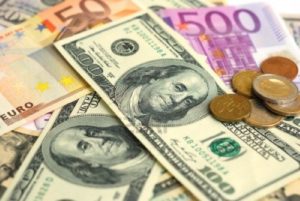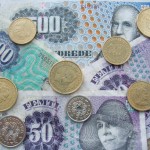 The euro declined to the weakest level in two weeks against the US dollar after it became clear the fourth largest euro zone economy, Spain, grew at a slower than previously estimated pace in the fourth quarter, while loans to the euro zone private sector fell for the 21st straight month, adding to concerns over the economic outlook of the currency bloc.
The euro declined to the weakest level in two weeks against the US dollar after it became clear the fourth largest euro zone economy, Spain, grew at a slower than previously estimated pace in the fourth quarter, while loans to the euro zone private sector fell for the 21st straight month, adding to concerns over the economic outlook of the currency bloc.
EUR/USD touched a session low at 1.3643 at 09:11 GMT, after which the pair consolidated at 1.3650, losing 0.26% for the day. Support was likely to be received at February 13th low, 1.3585, while resistance was to be met at February 26th high, 1.3757.
The Spanish National Statistics Institute reported today that the nations economy expanded by 0.2% in the three months through December, down from preliminary estimate of a 0.3% increase and after the Spanish economy grew by 0.1% in the previous quarter. On annual basis, the GDP of the country declined at an annualized rate of 0.2%, down from preliminary estimate of a 0.1% drop.
The lower-than-expected GDP readings were mainly driven by a slump in government expenditures, as they registered a 3.9% decline in the final three months of 2013 from the previous quarter.
A report by the European Central Bank revealed that loans to private sector declined at a 2.2% annualized rate in January, in comparison with analysts expectations for a 2.1% drop and after decreasing 2.3% in the previous month. This was the 21st straight month of contraction in loans to private sector.
However, the ECB said in a separate report that M3 money supply in the 18-nation common currency area increased at a 1.2% annualized pace in January, exceeding analysts projections for a 1.1% advance and after M3 money supply increased 1% in December.
M3 money supply can be sees as a key economic indicator as it measures the quantity of money circulating in the economy and an increasing supply of money can accelerate the inflation through increased spending.
The weak price pressure in the common currency bloc is one of the major issues that challenge the economic recovery, especially after on Monday it became clear that consumer prices in the euro area fell in January at the fastest pace since records began in 2001. Eurostat reported that the harmonized index of consumer prices for the euro zone declined by a record 1.1% in January after a 0.3% advance in the previous month. The annual inflation rate rose 0.8% last month, up from a preliminary estimate of 0.7% and after inflation increased by 0.8% in December. However, annual inflation remains near its weakest level ever and is less than half the ECB target of just below 2%.
The data suggested that consumer demand in the region remains weak and will probably continue to hamper economic development. The significant decline in the monthly consumer price index may prompt ECB’s policy makers to take action in order to stimulate the economy in the common-currency bloc as early as next meeting on March 6th, when the central bank is also going to publish its quarterly macro-economic forecasts, which will provide first inflation predictions for 2016.
Data scheduled to be released on February 28th may show that annual consumer prices rose 0.7% this month, signalling a fifth straight reading of inflation under 1%, which was referred by ECB President Mario Draghi as a danger zone.
Meanwhile, Federal Reserve Chair Janet Yellen is expected to testify in front of the Senate Banking Committee today, after the testimony was postponed on February 13th due to a snow storm. Yellen said earlier in February that US economy has gained enough strength in order to withstand reduction of monetary stimulus, while a considerable change in outlook would urge the central bank to further slow its tapering.
The Fed underscored improving economic conditions for reducing the pace of its monthly bond purchases by 10 billion USD per month in January and February. Currently the central bank buys 65 billion USD in assets each month.
Durable goods orders in the United States probably decreased 1.5% in January compared to December, according to the median estimate by experts, after a month ago orders declined 4.2%. The official numbers are scheduled to be published at 13:30 GMT. Durable goods orders represent a major part of overall factory orders in the country. Better than projected figures will certainly heighten the appeal of the US dollar.
The number of initial jobless claims, on the other hand, an indicator for lay-offs in the United States, probably dropped by 1 000 to reach 335 000 during the week ended on February 22nd.
Yesterday, the greenback was supported after official data revealed that for all of 2013, demand for US homes surged by 16.3% to reach a five-year high of 428 000.
The US Census Bureau reported that nation’s new home sales rose by 9.6% to reach annualized level of 0.468 million in January, confounding analysts’ expectations for a 1% drop to 0.400 million. At the same time, December’s reading was revised upwards to 0.427 million units from previously estimated 0.414 million units. The current housing market conditions seemed to improve as January’s reading was the strongest since June 2013, easing concerns over the US economic outlook.
Elsewhere, AUD/USD fell to a daily low at 0.8917 at 0:36 GMT, also the pair’s lowest level since February 10th, after which consolidation followed at 0.8931, losing 0.41% for the day. Support was likely to be found at February 10th low, 0.8907, while resistance was to be encountered at February 26th high, 0.9026.





